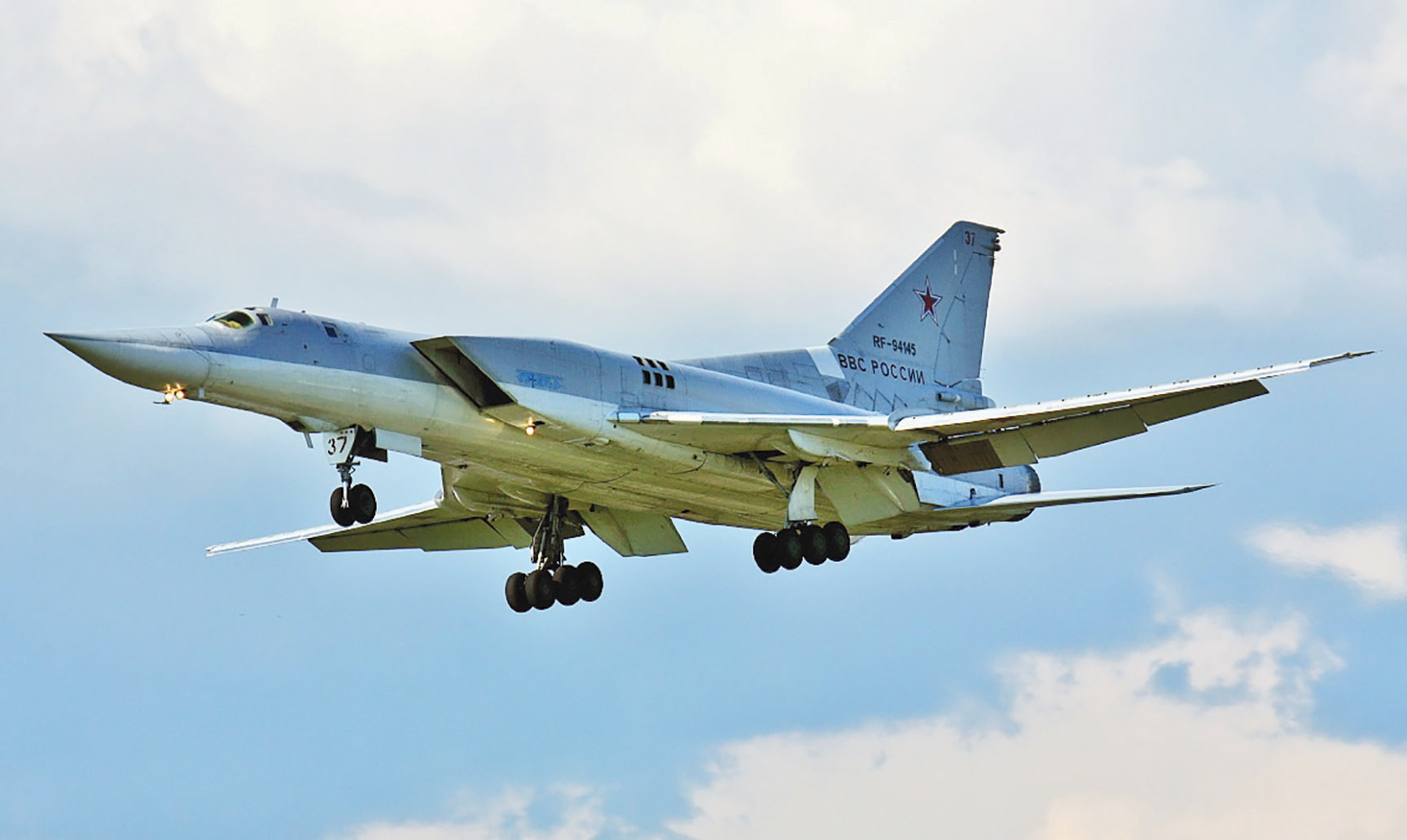Tupolev Tu-22M3M
Russian aircraft designers had been avidly experimenting with various forms of variable-geometry wings for decades before the Soviet Union began incorporating variable sweep on everything from fighters to strategic bombers in the 1960s. One of the latter, the Tupolev Tu-22 long-range and maritime strike aircraft, entered service in 1962 as a supersonic replacement for the Tu-16. Codenamed Blinder by the North Atlantic Treaty Organization and Shilo (“Awl”) by its three-man crews, the Tu-22 swiftly earned the enmity of its pilots for its difficult handling, poor visibility and its habit of pitching up and striking the tail on landing, to which the ground crews added poor serviceability and maintenance.
Hastening back to the drawing boards, the Tupolev design bureau created what amounted to a completely new airplane with only a superficial resemblance to the Tu-22. At the time, however, Soviet officials—starting with Premier Nikita Khrushchev—were expressing doubts about the bomber’s usefulness and convictions that intercontinental ballistic missiles had rendered bomber aircraft obsolete as a nuclear deterrent. In an attempt to conceal the added loss of face that the Tu-22 represented, Tupolev designated its redesign the Tu-22M, to give the impression that it was merely a modification of the original. The pretense worked well enough for the project to be approved on November 27, 1967. First flying on August 30, 1969, the Tu-22M entered service in 1972. Initially believing it to be the Tu-26, NATO codenamed it Backfire (a sobriquet more appropriate for the Tu-22).
Powered by two Kuznetsov NK-25 afterburning turbofans generating 55,700 pounds of thrust, the Tu-22M3 was 139 feet 4 inches long with a wingspan of 112 feet fully extended and 76 feet swept. Maximum speed was 1,400 mph (Mach 1.88) and range 4,400 miles. Armament consisted of up to 24,000 pounds of cruise missiles or bombs, as well as a 23mm GSh-23 cannon turret in the tail.
Production of the Tu-22 ended at 311 units, while 497 Tu-22Ms of various upgraded models were built. Amid continuing complaints of maintenance problems, Tu-22Ms gave air support to Soviet army operations in Afghanistan, including the siege of Khost from December 1987 to January 1988, the siege of Kandahar in October 1988 and at Salang Pass while covering the withdrawal of Soviet forces in January 1989. The Tu-22M remains in Russian service as of this writing.

